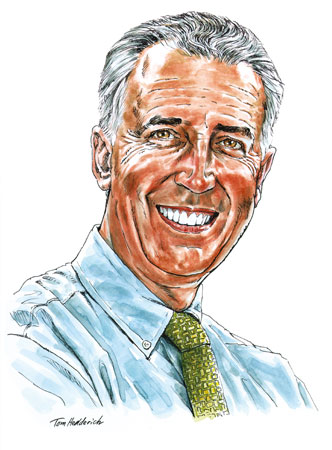Our love of the industry is comparable to the high level of anxiety it generates. It’s entertainment, so we should probably be having fun. But in our case, having fun is a serious business.

My anxiety, what has kept me up at night since the early days of VideoAge, is how to continue to provide value to our advertisers. This might sound like a puerile problem, but it is indeed a serious one, especially nowadays.
Years ago, when the U.S. studios dominated the international TV content sales business, it was relatively easy to come up with interesting and remunerative editions. If we managed not to step on any studio executives’ feet, we were rewarded with plenty of ads. The buyers would then opportunistically congratulate them for their insightful quotes that they read in VideoAge, and in the process get some licensee fee discounts.
And this was true for the independent sales companies as well. When he ran MCA TV International (i.e., Universal), the late Colin Davis used to be frank about it: “TV content buyers go to trade shows mainly to meet with the studios. We attract the buyers and the independents benefit from our presence.”
Other studio executives were even blunter, coming up with statements like: “We don’t need TV markets to license our content. We have offices around the world for that. Attending trade shows is just a form of support to our industry.”
When the independents became stronger and more aggressive on the international TV scene, they needed results from their advertising dollars. And that was when the anxiety really started to ramp up. It wasn’t just that we had to provide good editorial vehicles, we also had to make sure to reach buyers — especially new ones — because, as the indies used to collectively explain: “We go to the markets to meet new prospects. We’re in touch with our traditional buyers on a regular basis.”
And so, the anxiety gave way to nightmares. Our editions had to be well distributed at the markets and well circulated worldwide. Since the elusive buyers became our main targets, we also had to figure out what interested them the most, what they didn’t already know.
Plus, there was the fact that our reporting had to be attractive to the executives who provided the information, and thus knew more than we did! Not an easy task, indeed.
With the studios losing some grip on the international market, VideoAge’s reporting became bolder compared to the other trades. In fact, some of our regular readers became so accustomed to our rather nervy coverage that they’d chide us if they felt that we did not cover some controversial topic aggressively enough.
Then a new element came into the picture — the way the ads were to be displayed would have to change. A good stock paper was no longer good enough. Now advertisers clamored for size. They shunned the small A4 page format. They wanted to see their ads BIG, on a tabloid-sized pub-lication. Spreads became the norm since companies wanted to see their shows on large posters.
But, mind you, no one was prepared to spend more money in order to do it. On the contrary, ad rates were coming down.
How we survived that era could be a subject for a business school lecture. While distribution costs increased and printing expenditures escalated, revenues were lower. But the final product had to be as good — if not better — than the previous one.
The frustrating part still is that when the time comes to promote a new issue, clients seem to all but forget the compliments they bestowed upon the previous issue, and instead question us on the quality of the next one.
(By Dom Serafini)
Audio Version (a DV Works service)

Leave A Comment